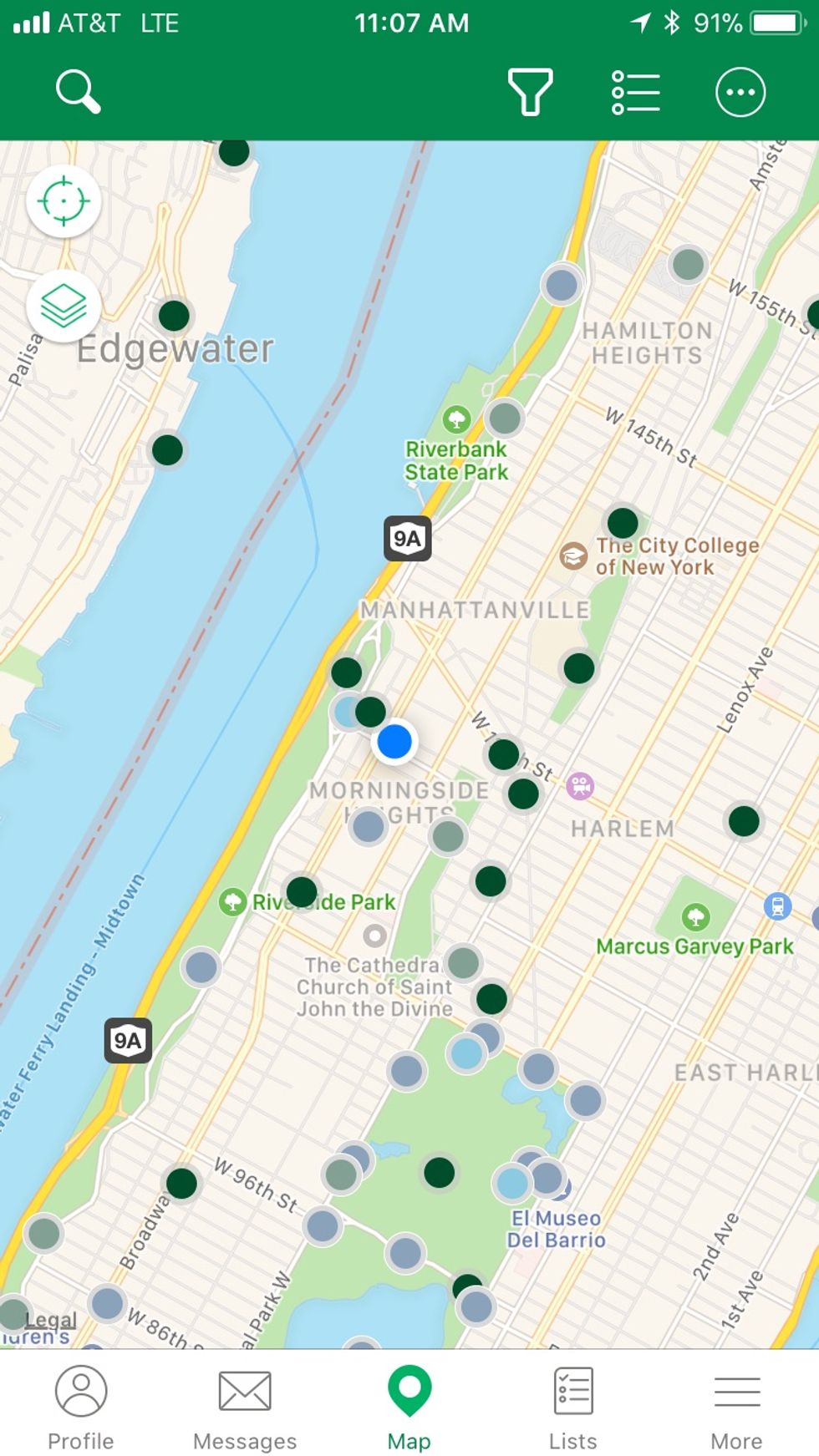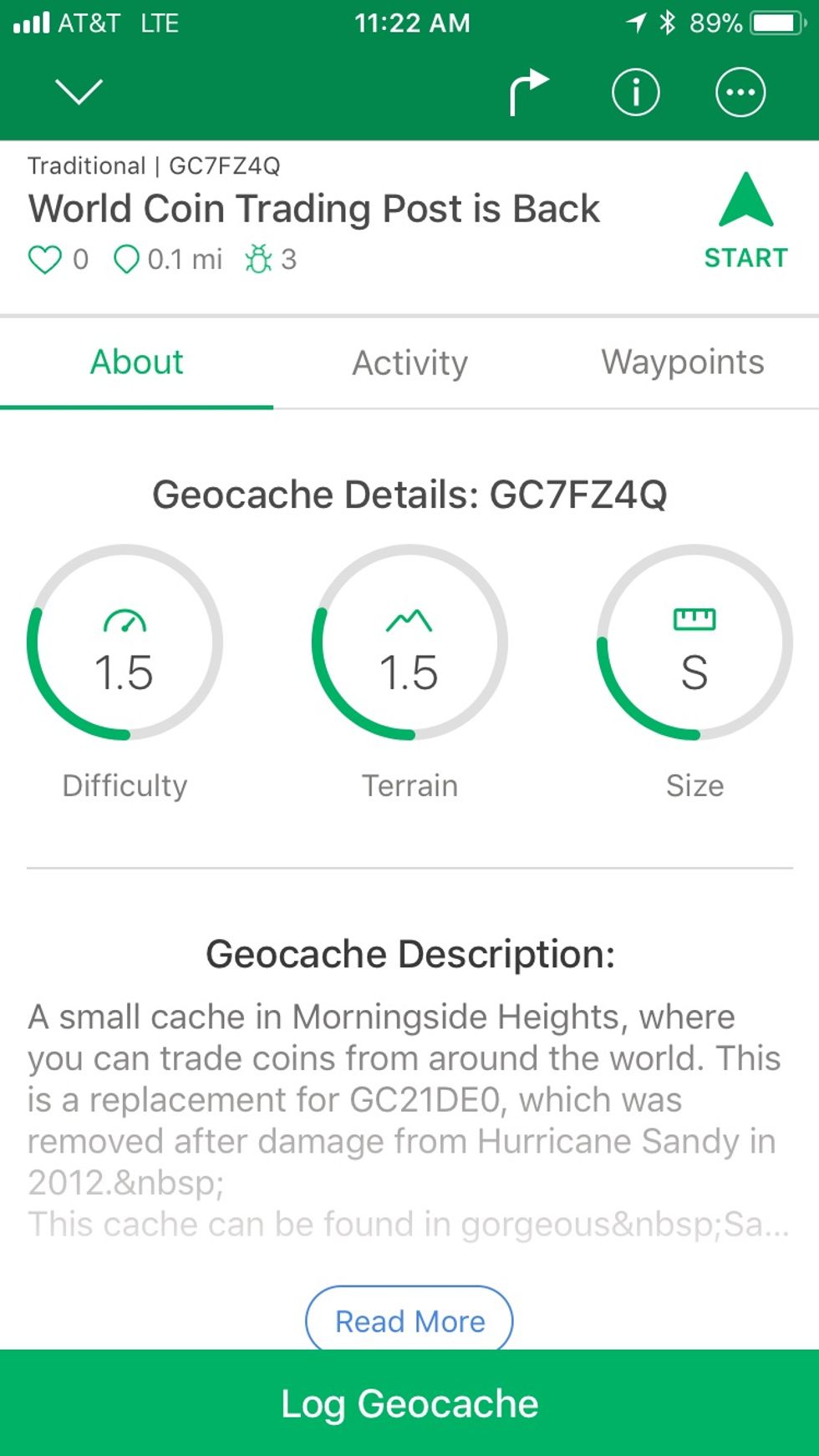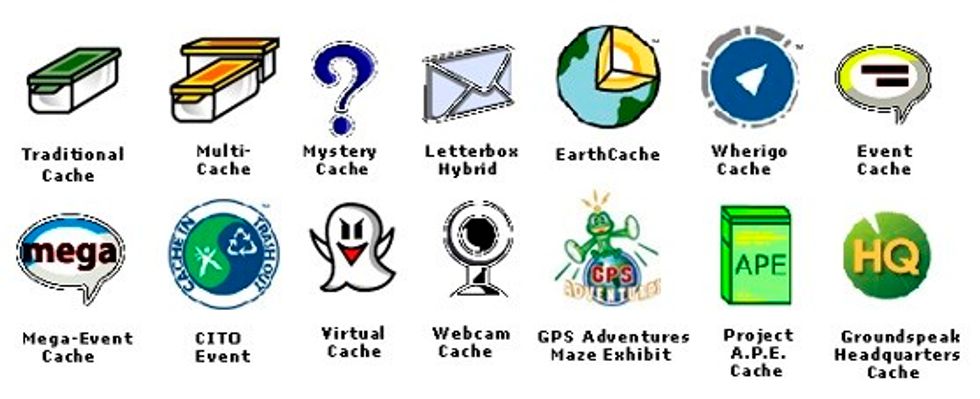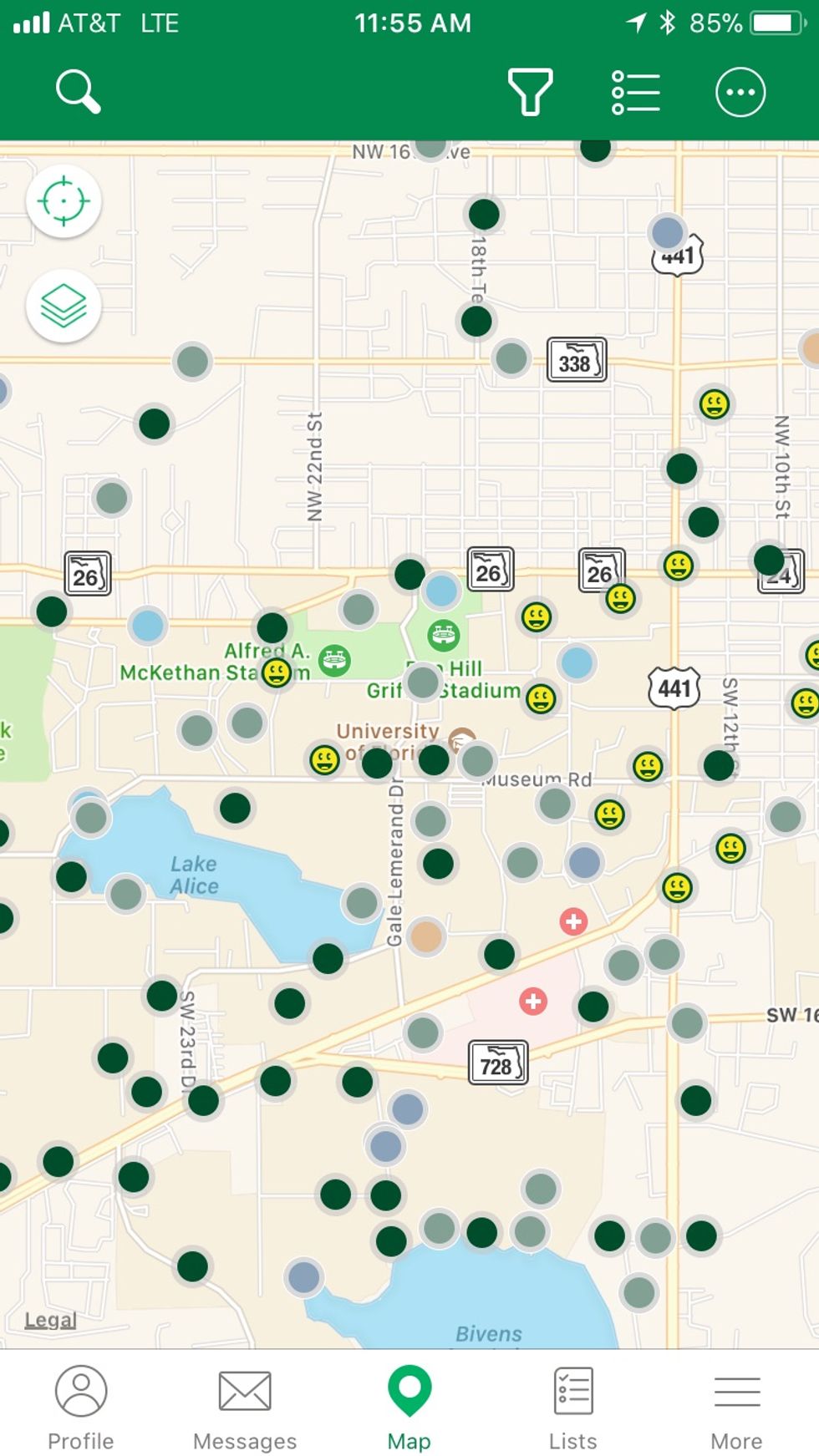Not going to lie, I started Geocaching because I was tired of Gainesville and spending money.
I remember lying across the floor in my friend’s room, bored out of my mind, and asking him, “Richard, what’s there to do in Gainesville with no car, no money, when you’re under 21?”
From that moment on, we rounded up a group and started Geocaching, finding hidden treasures in the most random places across campus and Gainesville. One night, we even stayed out until 4 AM, scouring Norman Garage for that tiny dot on our mobile app.
In the simplest of terms, Geocaching is a free app that allows you to find hidden treasures across the world. However, you should upgrade to $6 a month to access most of its features. If you only want the free version, the Geocaches you cannot access show up as faded dots. I am now going to explain how Geocaching works, then list the potential Geocaches you may find along your journey.
How it Works
After you download the app, you will see your current location with respect to the surrounding Geocaches. For instance, I am currently writing this article in the Jewish Theological Seminary’s library in Manhattan, as shown by the picture below. The dots indicate the surrounding Geocaches. If I wanted to find the Geocache, I would tap whichever one I want to discover, and the GPS would direct me to its coordinates.
When you tap on a Geocache, you will see three tabs: About, Activity, and Waypoints. The About section lists the Geocache’s name, difficulty level in discovering it, level of terrain, size, description, any trackables, and potential hints and pictures. The Activity section depicts all the comments other Geocachers left once they did or did not discover the Geocache. The Waypoints section lists any associated coordinates.
Once you discover the Geocache—some sort of container—you must sign a logbook rolled inside it, add in the “Activity” section that you found the Geocache, and exchange your prize with its prize. I usually find prizes like McDonald’s toys, erasers, and coins.
Types of Geocaches
- Traditional Cache—This is the most common type of Geocache. It will be a container with given coordinates, represented by a black dot. Traditional caches with difficulty levels of 1.5 and below are free to discover without you needing to upgrade your Geocaching membership.
- Mystery Cache—This involves a puzzle that you must solve in order to figure out the cache’s coordinates, represented by a dark blue dot.
- Multi-Cache—This is a two or more-step cache. The original coordinates will lead you to a clue, which you solve to find a physical container, represented by an orange dot.
- Earth Cache—This cache requires you to find out information about or take a picture of something within your geological surroundings, represented by a light blue dot.
- Event Cache—This is a gathering of Geocachers, represented by a red dot. It will include the date and coordinates of the event. Event caches are free to attend, and do not require you to upgrade your GeoCaching membership.
- Virtual Cache—Similar to an Earth Cache, a virtual cache requires you to find a location and take a picture or answer questions about it. This is also represented by a light blue dot.
There are several other types of Geocaches, but these are just the main ones. Below is a list of the other types of Geocaches.
Overall, Geocaching is a great activity for a family outing, as a date, or when you’re bored with friends and don’t feel like spending money or driving. Here’s UF’s Geocaching map in case you’re curious. (The faces indicate the Geocaches I've already found.) Enjoy the adventure!























